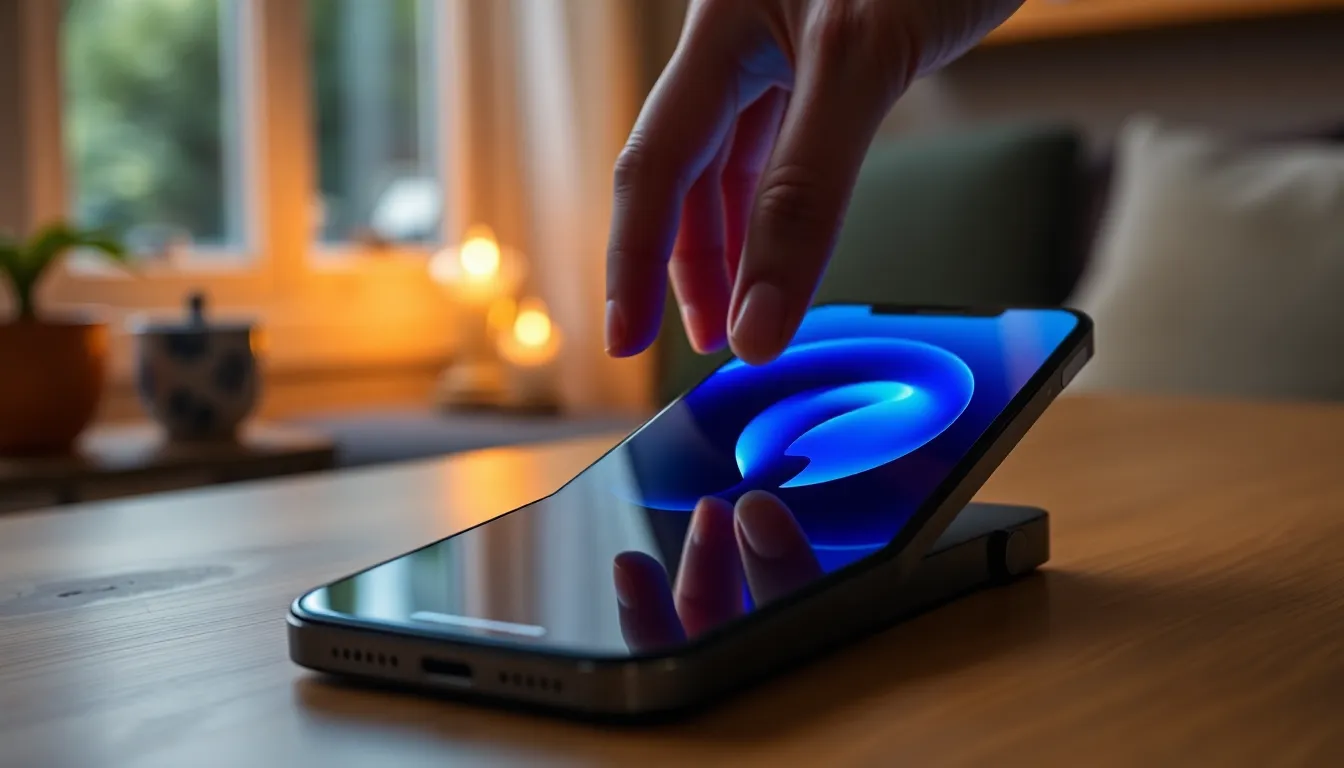The iPhone 14 has arrived, and with it comes a whirlwind of excitement and questions. One of the hottest topics buzzing around is whether this sleek device features an always-on display. Imagine glancing at your phone and instantly seeing the time, notifications, and other vital info without lifting a finger. Sounds dreamy, right?
Table of Contents
ToggleOverview of iPhone 14 Features
The iPhone 14 showcases various advanced features, enhancing user experience significantly. One highlight involves the always-on display, allowing users to access time and notifications effortlessly. This functionality means users can quickly glance at important information without waking the device.
In addition to the always-on display, the iPhone 14 boasts improved battery life. Testing indicates that users may experience up to 20 hours of video playback. Users can enjoy longer usage periods without the anxiety of frequent recharging.
Camera upgrades represent another key aspect of this model. The dual-camera system offers enhanced low-light photography and higher resolution capabilities. Users will appreciate the ability to capture stunning images even in challenging lighting conditions.
Performance improvements stem from the A16 Bionic chip. This chip delivers superior speed and efficiency, allowing for smoother multitasking and app performance. Gamers and content creators find that graphics rendering becomes more seamless, enhancing overall performance.
Enhanced connectivity options also stand out in this device. Support for 5G networks leads to faster download speeds and improved streaming capabilities. Users can enjoy uninterrupted connectivity, making daily tasks more efficient.
Overall, the iPhone 14 combines innovative features that cater to various user needs. Functionality, performance, and design converge to offer a device that stands out in the market.
Understanding Always-On Display

Always-On Display allows users to view essential information like time and notifications without waking their devices. This feature enhances usability by providing quick access to relevant updates.
What Is Always-On Display?
Always-On Display signifies a feature that keeps limited information visible even when a smartphone is in standby mode. This functionality enables users to glance at their screen for details without needing to unlock their phone. It typically shows the time, date, battery status, and various notifications. With this feature, users remain informed without the need for constant interaction.
How It Works on Smartphones
How Always-On Display operates involves utilizing low-power technology. It leverages OLED screens, which illuminate only specific pixels, allowing for energy-efficient display of essential elements. As a result, smartphones consume minimal battery power while keeping critical information visible. When users receive notifications, they can view them instantly without fully engaging with their devices. This method combines convenience with efficiency, significantly improving user experience.
iPhone 14 and Always-On Display
The iPhone 14 features an always-on display that enhances usability by allowing users to glance at essential information quickly. This capability shows the time, notifications, and battery status, all while conserving energy.
Apple’s Implementation
Apple’s approach to always-on display technology integrates low-power features with its OLED screens. Specific pixels illuminate to provide a seamless experience without draining battery life excessively. Users enjoy customizable display options, ensuring they can tailor the information displayed according to personal preferences. Notifications appear subtly, maintaining an unobtrusive presence while keeping users informed. This design choice enhances convenience without compromising aesthetics.
User Experience and Performance
User experience improves significantly with the always-on display, contributing to effortless interaction. Individuals find it easier to check updates without unlocking the phone, saving time during busy moments. Response times remain swift, as this feature doesn’t hinder overall performance. The implementation of the A16 Bionic chip complements this efficiency, ensuring smooth multitasking alongside the always-on display. Users appreciate the balance of functionality and sleek design, making the iPhone 14 a compelling choice.
Comparison With Previous Models
The iPhone 14 introduces features that enhance usability compared to its predecessors.
iPhone 13 Features
The iPhone 13 lacks the always-on display. Notifications only appear when the device is unlocked. The OLED display is effective but doesn’t maintain visibility in standby mode. Battery life allows for up to 19 hours of video playback, which is impressive, yet it still requires more frequent charging. Camera performance excels with improved low-light capabilities. High-quality photos are achievable, but the interaction method to view updates is less efficient without the always-on display.
Key Differences
The iPhone 14 builds on its predecessor by integrating an always-on display that conserves battery power while showing time, notifications, and other essential details. The device remains accessible even when not in use, enhancing convenience. Battery life extends to 20 hours, a marginal improvement over the iPhone 13. Additionally, the iPhone 14’s A16 Bionic chip significantly boosts multitasking efficiency. Enhanced camera features offer even better performance under challenging conditions, positioning the iPhone 14 as a more advanced option for users.
Market Competitors
Several smartphones on the market offer similar features to the iPhone 14’s always-on display. Samsung Galaxy S22 incorporates this functionality, allowing users to view essential information without unlocking the device. Google Pixel 6 also features an always-on display, showcasing time and notifications effectively. Both competitors utilize OLED technology to maintain low power consumption while providing useful updates.
Similar Features in Other Smartphones
Smartphones like the Samsung Galaxy S22 and Google Pixel 6 provide always-on display options, enhancing usability. These devices deliver time and notification visibility without requiring interaction. Samsung’s implementation allows for customization, supporting user preferences for displayed information. Google’s approach ensures essential notifications appear on screen while the phone is idle. Each competitor utilizes OLED technology, promoting energy efficiency while offering a sleek user experience.
Advantages and Disadvantages
An always-on display brings numerous benefits, such as quick access to information and improved user convenience. Users appreciate the ability to glance at notifications without unlocking their devices. However, potential drawbacks include increased battery drain for some users, especially those who enable extensive notifications. Additionally, competitors may vary in customization options and responsiveness, impacting overall user experience. Evaluating these aspects helps consumers make informed choices when selecting a smartphone.
The iPhone 14’s always-on display offers a significant upgrade in user experience by allowing quick access to vital information without unlocking the device. This feature enhances convenience while maintaining low power consumption thanks to its OLED technology. With customizable options and seamless integration alongside the A16 Bionic chip, users can enjoy a more efficient smartphone experience.
As competition in the market grows, the iPhone 14 stands out with its advanced features and improved usability. For those seeking a device that balances functionality and aesthetics, the iPhone 14 proves to be a compelling choice.



